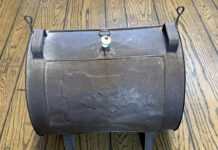By Thomas E. Noyes
Many dairy producers have chosen to utilize management intensive grazing for reasons including reduced labor, less crop farming and forage harvesting, reduced stress on cows and people, lifestyle and economics.
Hopefully economics is an important reason and certainly needs to be considered when one is choosing a management system.
Here we are with the grazing season in full swing so I thought that I would share with you some of the highlights of the New York Dairy Farm Business Summary Intensive Grazing Farms 2002.
New York model. Jim Grace, Jason Karszes and others at Cornell have put together dairy grazing summaries for seven years.
For their summary, a dairy grazier is one that grazed cows at least three months, moving to a fresh paddock at least every three days and more than 30 percent of the forage consumed during the grazing season was from grazing.
Thirty-four farms submitted records to the program of which data on 29 farms was compiled for 2001 and 2002. Here is a brief comparison of these 29 farms over a two-year period.
Comparisons. In 2001, these farms milked 87 cows with 65 heifers. In 2002 they milked 94 cows and had 68 heifers.
They increased total milk shipped and production per cow going from 1,403,207 pounds to 1,558,796 pounds and from 16,091 pounds per cow to 16,522 pounds per cow.
Hay yields per acre were 2.5 tons of dry matter in 2001 and 2.1 tons of dry matter in 2002.
Similarly for corn silage yields were 14.4 tons per acre and 12.1 tons per acre. Weather was a major factor in reducing yields in 2002.
Efficiency. When you look at labor efficiency, I would suggest some improvement could be made.
In both years the farms averaged 36 cows per worker.
In 2001 they shipped 575,085 pounds of milk per worker at a cost of $1.44 per hundredweight. In 2002 they shipped 599,537 pounds per worker at a cost of $1.41 per hundredweight.
Reduce costs. One of the reasons a dairy producer chooses a grazing system is to reduce costs. So here are a few points on cost control for the two years.
For 2001 the grain and concentrate purchased accounted for 22 percent of the milk sales or $3.56 per hundredweight.
In 2002 it was 28 percent of the milk sales or $3.66 per hundredweight.
Total feed and crop expenses were $4.98 per hundredweight in 2001 and $5.06 in 2002. The difference being weather in 2002 reducing yields and quality.
Profits. The profitability of the grazing dairies was dramatically different between 2001 and 2002.
The net farm income without appreciation was $47,553 in 2001 and $29,887 in 2002 with a return to labor and management of $19,305 and $2,034.
The rate of return on equity capital without appreciation was 3.1 percent in 2001 and -2.6 percent in 2002.
The net income per cow without appreciation went from $546 per cow to $317 per cow.
Not only was 2002 a poor crop year it was also a year of significantly lower milk prices. The milk prices decreased 19.9 percent going from $16.14 to $12.93 per hundredweight
Making a buck. However, even in a tough year good managers can still make a buck and significantly outperform the below-average producers.
From the 2002 data there were 21 selected farms, 10 representing above average and 11 below average. Here are some major differences between the two groups.
The above-average group produced 19,868 pounds of milk per cow compared to 14,626 for the below-average group.
The top group had an operating cost of $8.25 per hundredweight and a total cost per hundredweight of $13.61 compared to $10.23 and $15.02 for the low group.
That made a difference in net profit per cow of $695 for the above average group and $197 for the below average group.
At the top. Even more interesting were some of the differences that were found among the top group of producers.
Four of the top producers fed corn silage with pasture. The percent of forage from pasture was 65 percent and their cows averaged 22,090 pounds of milk giving them a net profit per cow of $816.
Six of the top producers fed no corn silage with 73 percent of the forage from pasture and their cows averaged 15,335 pounds of milk giving them a net profit per cow of $582.
Again, there was a difference in the level of grain feeding between the top producers and the lower producers.
The above average group fed 15.7 pounds of grain per cow per day compared to the 14.3 pounds for the lower group. This gave the top group an advantage of $695 v. $197 net farm income per cow.
I think these differences are interesting in that there are management differences among graziers just like with confinement dairies.
Those with the higher net incomes produced more milk per cow and had lower costs.
These herds also had a different level of supplementation with the pasture with the top group feeding corn silage and grain.
Grazing can be an option to increase farm income. However, not all graziers are equal in profitability.
(The author is a dairy agent for OSU Extension in Wayne County. Questions or comments can be sent in care of Farm and Dairy, P.O. Box 38, Salem, OH 44460.)












